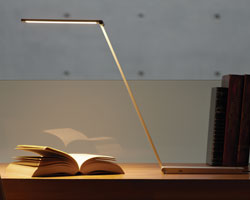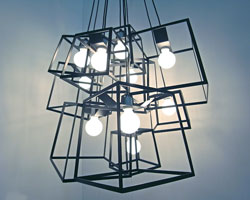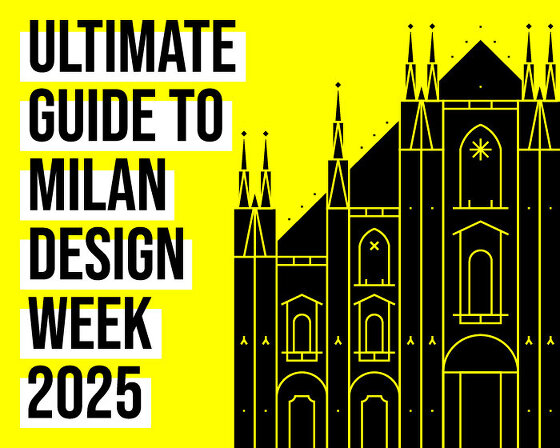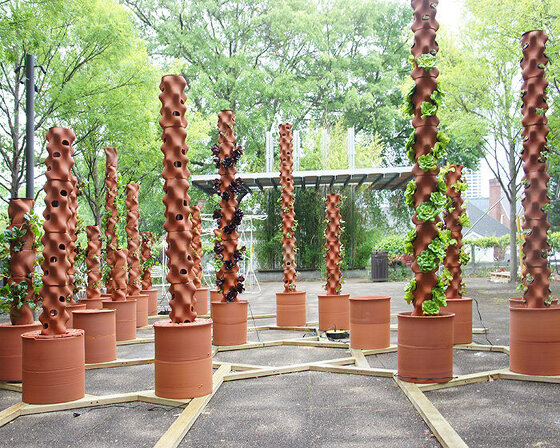‘chair with belly button’ by wang i chao, part of the ‘perpetual motion’ collaboration between pratt institute and cappellini image © armando rafael
the industrial design program at new york’s pratt institute partnered with italian furniture design company cappellini for the exhibition ‘perpetual motion’, which looks ahead to the future of furniture design. graduate and undergraduate students presented their concepts to cappellini and a team of industry professionals, who selected nine of the strongest designs for prototyping and exhibition at the international contemporary furniture fair 2011.
mark goetz, head faculty advisor of the industrial design program at pratt, elaborates: ‘the premise of ‘perpetual motion’ is to look at the future of furniture design by coming up with fresh, new ideas that incorporate technology and sustainability and that potentially envision updates to classic designs for the future.‘
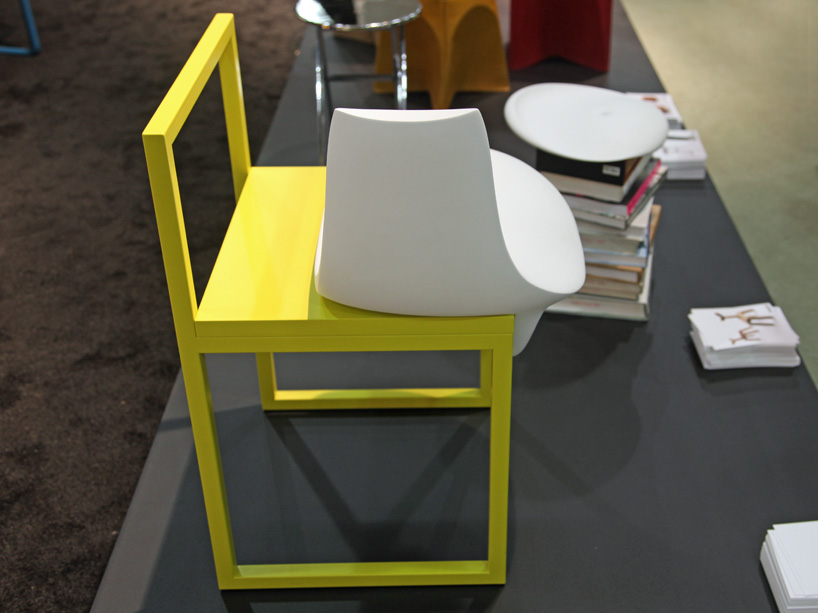 side view of ‘chair with belly button’, as used on a metal chair, with a second model used on a pile of books in the background image © designboom
side view of ‘chair with belly button’, as used on a metal chair, with a second model used on a pile of books in the background image © designboom
the lightweight ‘chair with belly button’ series, designed by taiwanese artist wang i chao, lets users more comfortably convert common spaces and materials into seating options. the pieces are placed onto the floor, steps, other chairs, piles of books, or any other sturdy surface to convert it into a place to sit.
 ‘dmc-12’ by edward hale image © armando rafael
‘dmc-12’ by edward hale image © armando rafael
investigating ‘how two elements can communicate a sense of enclosure’, ‘dmc-12’, the work of new york designer edward hale, features clean lines and an unconventional hinging structure that belies its function. a lacquered case is set within powder-coated blue steel tubing, jointed so that the entire structure pulls forward and outward when the cabinet doors are opened.
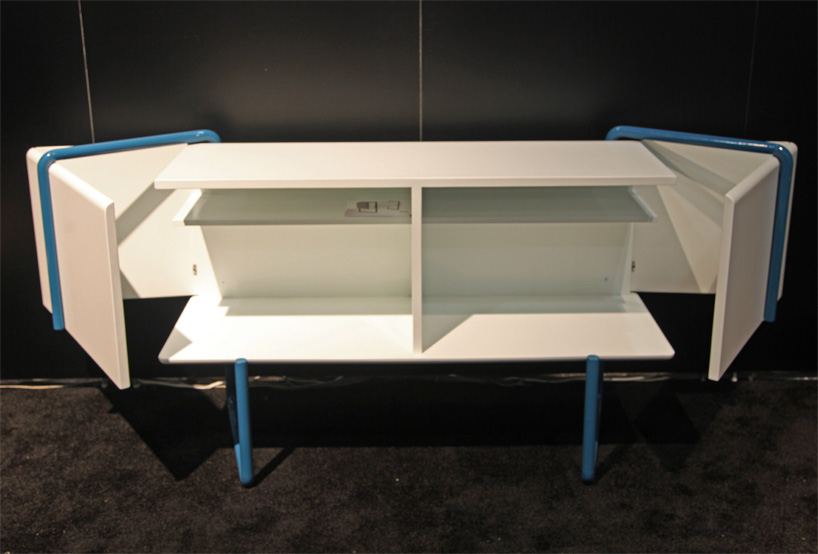 full view of ‘dmc-12’ open image © designboom
full view of ‘dmc-12’ open image © designboom
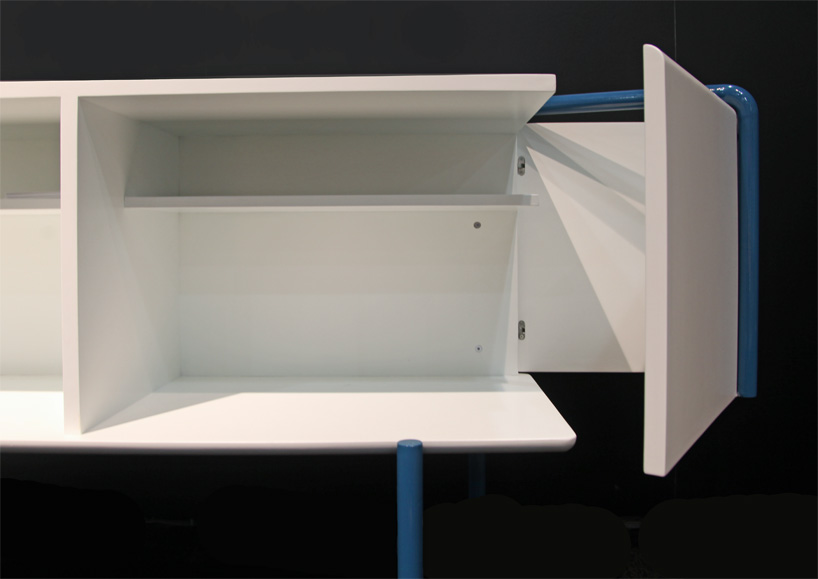 closer view of ‘dmc-12’ image © designboom
closer view of ‘dmc-12’ image © designboom
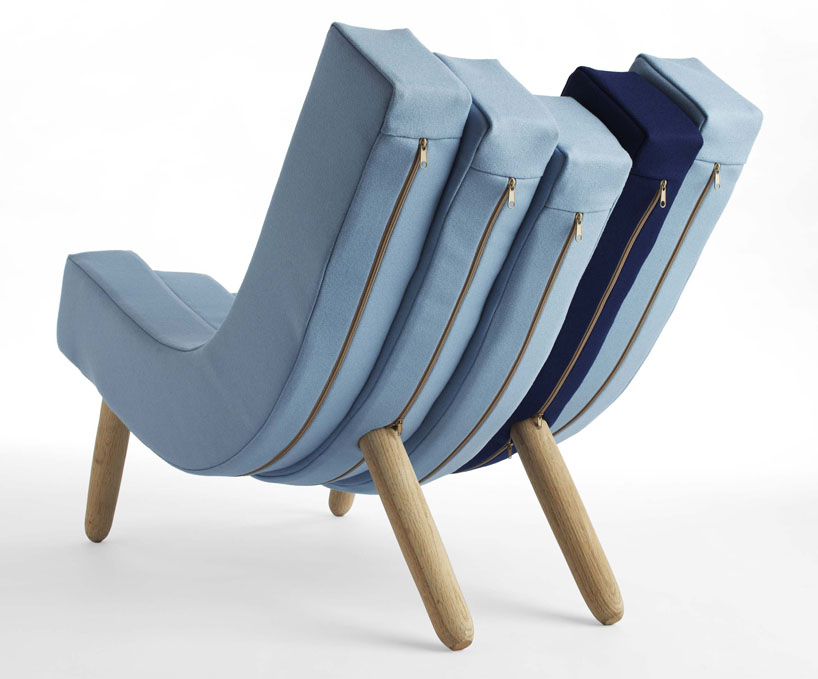 ‘the modularity’ by kyung ho chang, rear view image © armando rafael
‘the modularity’ by kyung ho chang, rear view image © armando rafael
‘the modularity’, by south korean designer kyung ho chang, relies on modular structure to accommodate ‘infinite variation in scale and finish‘, permitting an entire line of products to be produced from the same basic components. each module consists of a curved piece of molded plywood, surrounded by foam and upholstered. the independent elements are then connected internally to create a structural whole, raised on wooden legs.
 view of ‘the modularity’ on display at the ICFF
view of ‘the modularity’ on display at the ICFF
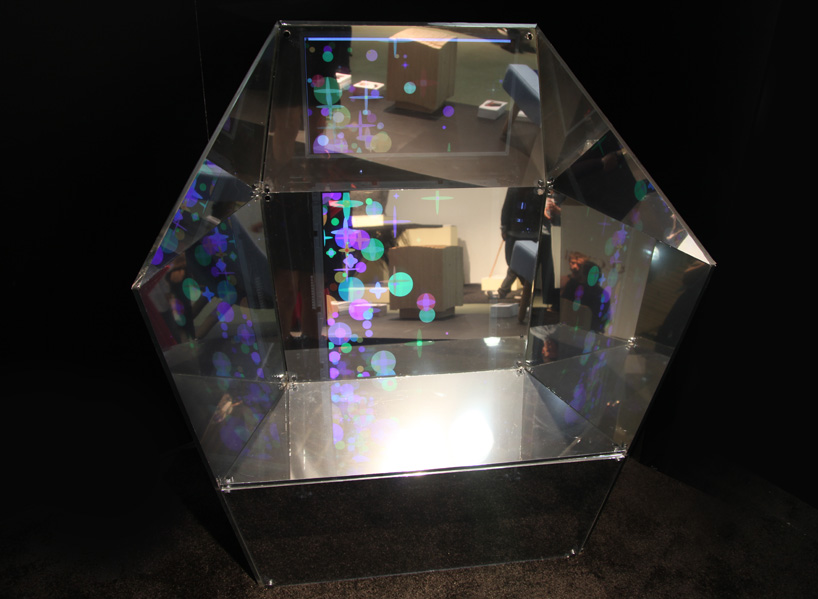 ‘reflexion’ chair by arnold chu image © designboom
‘reflexion’ chair by arnold chu image © designboom
interested in infusing technology into furniture design, hong kong-born, US-based designer arnold chu uses LCD panels as ‘digital upholstery‘ in his mirrored chair ‘reflexion’. controlled remotely by computer, the panels permit the appearance of the chair to be easily changed, featuring images, video, or even motion-reactive graphic visualizations.
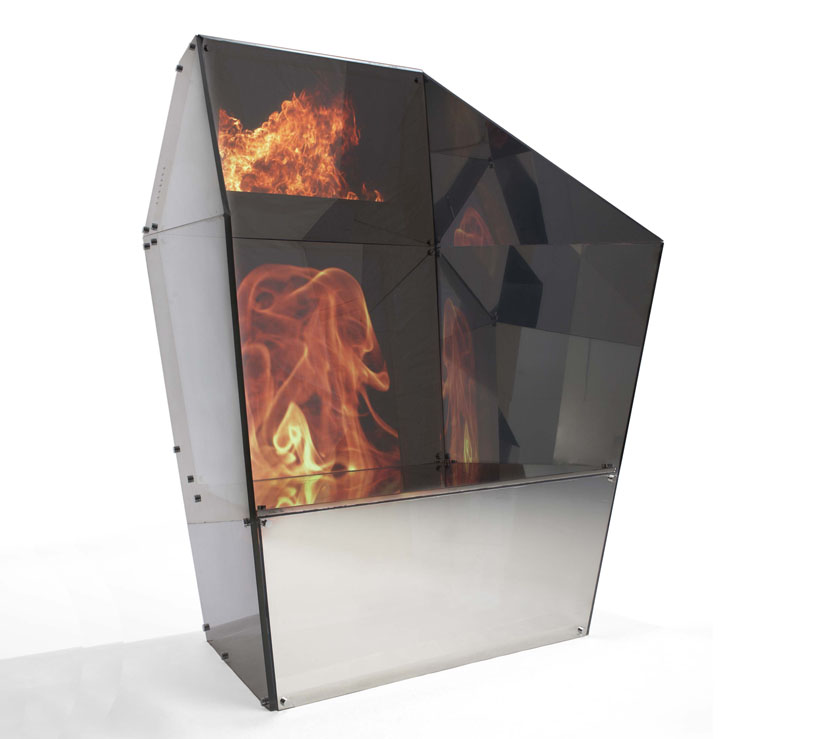 the appearance of the chair can change completely by displaying a different image or video on its embedded LCD panels image © armando rafael
the appearance of the chair can change completely by displaying a different image or video on its embedded LCD panels image © armando rafael
 ‘bundle stool’ by elizabeth joy wong image © armando rafael‘bundle stool’, created by american designer elizabeth joy wong, incorporates 196 squared blocks of pine with a foam foundation that lets the chair respond to the shape of its user. each wood piece lowers proportionate to the pressure applied to it, creating a seat that is comfortable, as well as one that challenges people’s assumptions on what materials should feel like.
‘bundle stool’ by elizabeth joy wong image © armando rafael‘bundle stool’, created by american designer elizabeth joy wong, incorporates 196 squared blocks of pine with a foam foundation that lets the chair respond to the shape of its user. each wood piece lowers proportionate to the pressure applied to it, creating a seat that is comfortable, as well as one that challenges people’s assumptions on what materials should feel like.
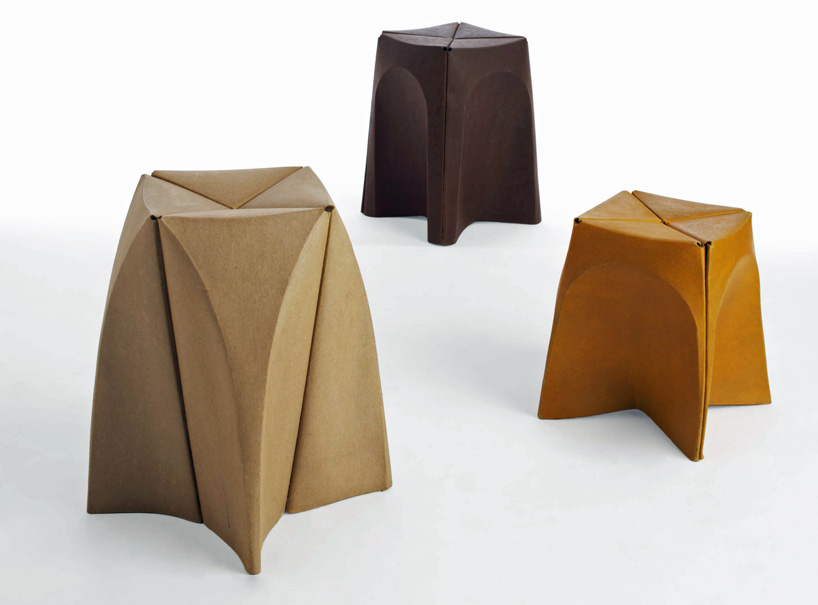 ‘chipboard stools’ by dana oxiles image © armando rafael
‘chipboard stools’ by dana oxiles image © armando rafael
the ‘chipboard stools’ by hawaiian designer dana oxiles are composed exclusively of folded chipboard, stabilized with a small amount of glue and coloured with analine dye. her pieces include a range of the origami-like forms, in which chipboard is scored and bent into interlocking structural modules. oxiles explains that integral to her design is the goal ‘to elevate a humble material, so that it is read[s] as a chair before being read as sustainable‘.
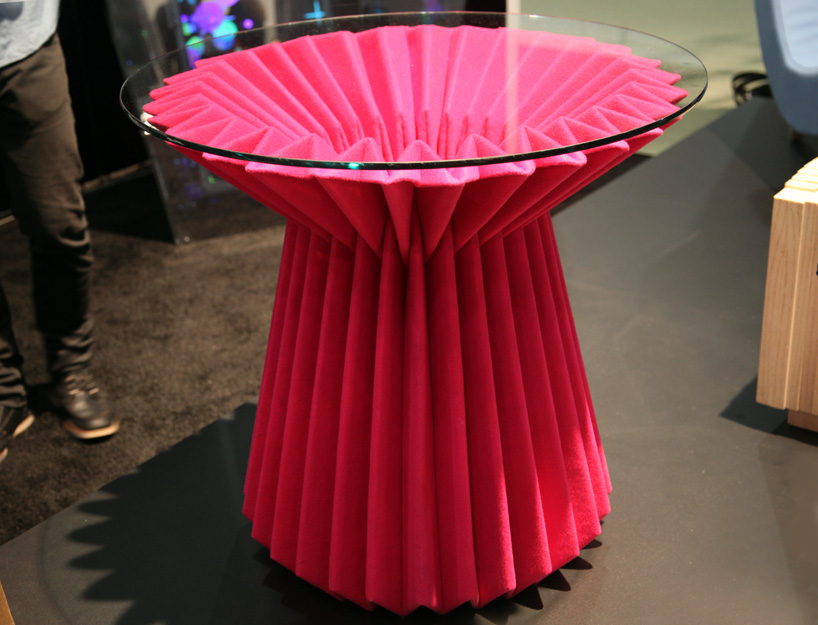 ‘folded felt table’ by li-rong liao image © designboom
‘folded felt table’ by li-rong liao image © designboom
having explored folding as a basis for design in medical technology and fashion, taiwan-born, US-based designer li-rong liao adopts the profile to furniture in ‘folded felt table’. the piece features a fan-folded base of a single sheet of cardboard, covered in felt.
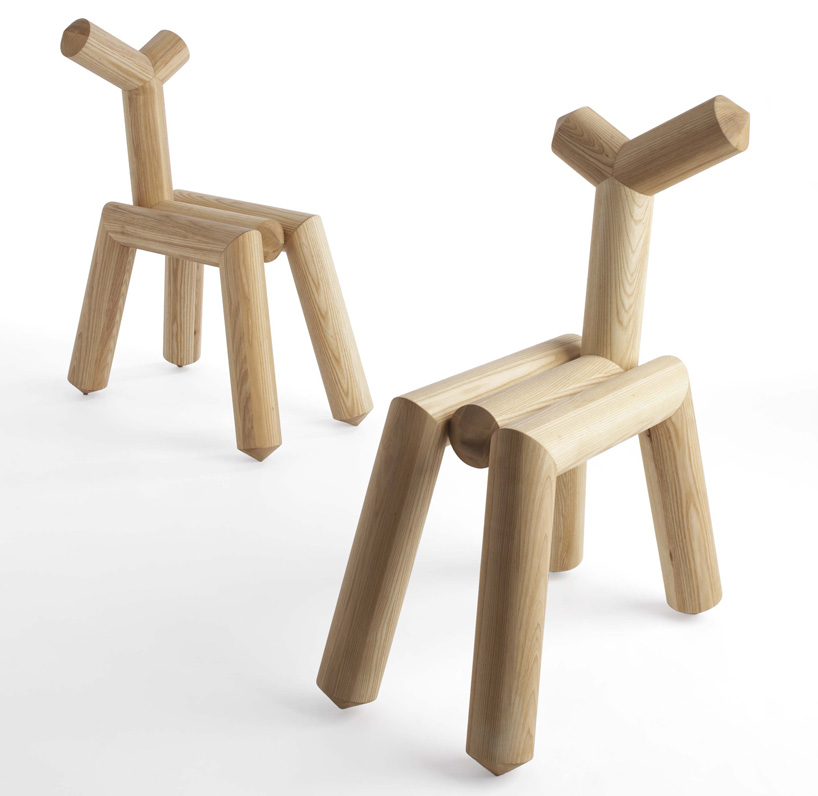 ‘timbre chairs’ by jesse trentadue image © armando rafael
‘timbre chairs’ by jesse trentadue image © armando rafael
with ‘timbre chairs’, american designer jesse trentadue adapts traditional joinery techniques and rustic ash wood to modern manufacturing processes, offering ‘both a celebration and twist on the materiality and heritage of wood.’
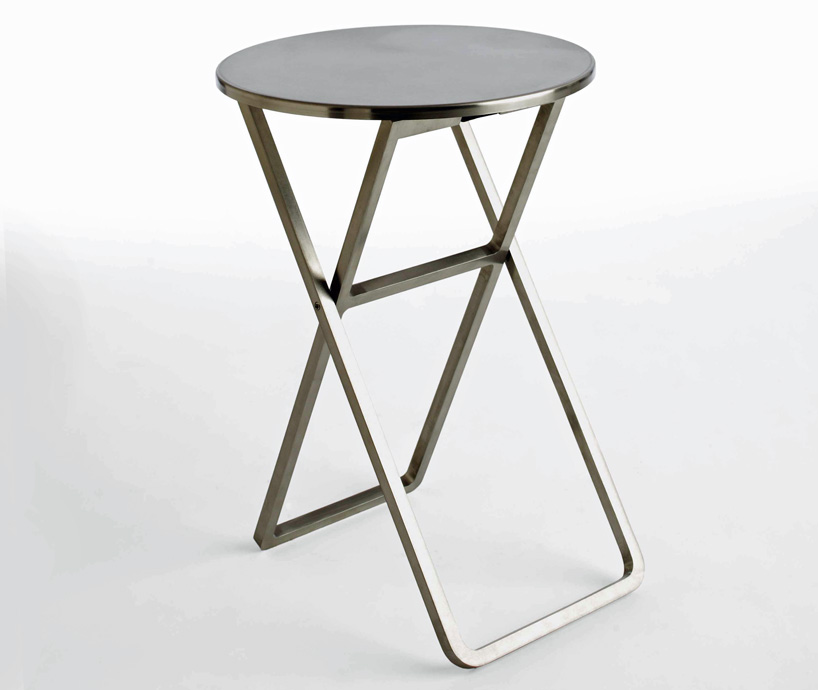 ‘hk-stool’ by chun chun image © armando rafael
‘hk-stool’ by chun chun image © armando rafael
‘hk-stool’, the first furniture piece of designer chun chun, offers a minimalist interpretation of a stool design popular in her native hong kong.
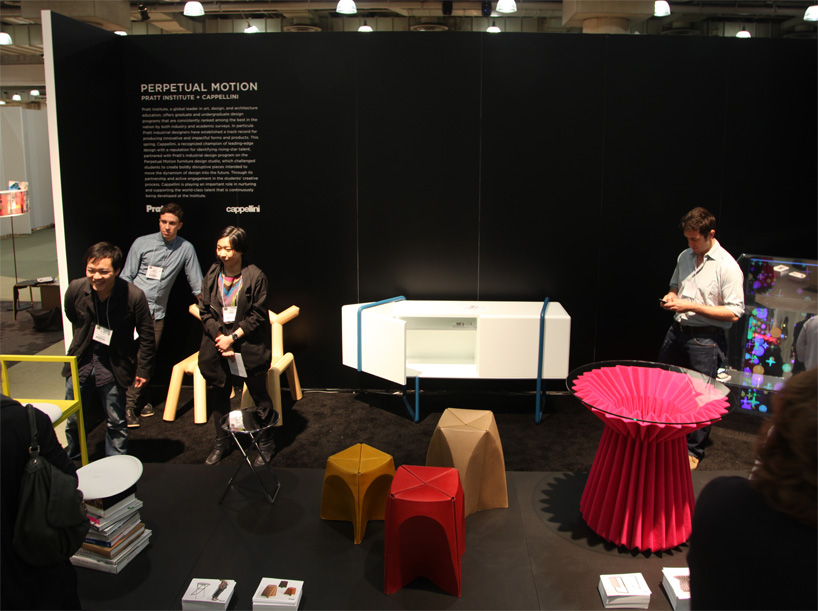 view of the exhibition during the ICFF 2011 image © designboom
view of the exhibition during the ICFF 2011 image © designboom



